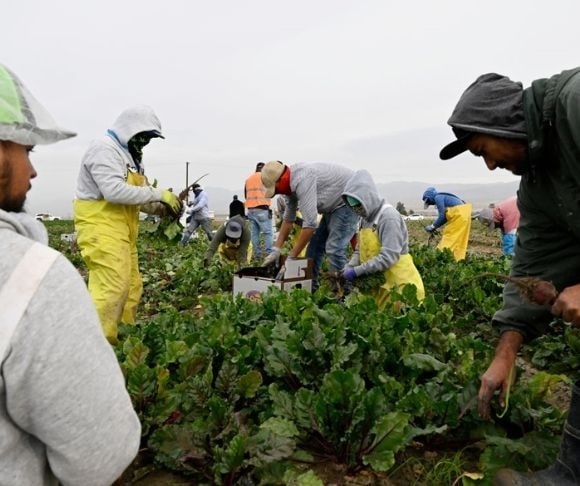President Joe Biden is mulling immigrant worker visas as an avenue to permanent citizenship. Specifically, the administration is considering the addition of a rule to expedite temporary seasonal work allowances. In addition, the Department of Homeland Security (DHS) will revise and update the current policy, namely the H-2A and H-2B visas, covering agricultural and seasonal migrant workers.
When migrants apply under H-2A or H-2B limited access, they do so with the understanding that when the job or season is over, they must return to Mexico or Central America. This new ruling, while still being processed, would allow migrants to stay on if applying for permanent status or citizenship.
A partial summary of the proposal reads:
“The [rulemaking process] also proposes to provide increased flexibility for H-2 workers by extending grace periods, and allowing H-2 workers to take steps toward becoming permanent residents of the United States without being deemed to have abandoned their nonimmigrant intent or their foreign residence solely on that basis.”
The Federation for American Immigration Reform (FAIR), while not deriding the effort as poor public policy, warned of significant abuses by potential fraudulent migrants and greedy employers who may use the new rule to game the system. But other issues worry the no open borders crowd: job losses. FAIR President Dan Stein told Fox Digital, “The clear desire of foreign nationals to get an H-1B visa — primarily because it can lead to permanent residence — has encouraged unscrupulous outsourcing practices while reinforcing employers’ dependency on cheap foreign labor.”
Stein continued, “By morphing two additional guest worker programs into de facto permanent immigration streams, the Biden administration is doing so at the detriment of American workers, even during a time of economic uncertainty.”
Proponents see an opportunity to open new citizenship pathways for already vetted and employed migrants. But the H-2A and H-2B have functioned relatively well for decades. So why change the game plan now? The answer is nearly every administration has changed the game for one reason or another.
Changing the Immigrant Program
While making some nervous, the proposed rule change has empowered immigrant organizations to add protections for H-2A and H-2B workers. The US Citizenship and Immigration Services (USCIS) say the rule will help to “address exploitation and abuse, protect workers, and increase program efficiencies.” However, USCIS also is seeking to increase migrant filing fees significantly. The agency claims to use the prices to “recover its operating costs, re-establish and maintain timely case processing, and prevent the accumulation of future case backlogs.” But the new rule would also prohibit immigration levies collected by employers who rely on garnishing workers’ wages to offset said application fees. Another critical aspect of the rule will give an immediate allowance to a migrant worker to begin upon petition rather than waiting for the sometimes slow and laborious approval process.
Migrant Rules and Regulations

(Photo by RJ Sangosti/MediaNews Group/The Denver Post via Getty Images)
The United States has advocated for seasonal workers for various reasons: the two most common are the lack of US workers to fill seasonal positions and apathetic Americans who refuse to do the jobs available. Most foreign workers are from Mexico.
In 1942, the Bracero Program was created because the number of men and women fighting in World War II created an untenable agricultural labor shortage.
The program was discontinued in 1964, but it should be noted that it spawned the mass migration that began in the 1980s and continues today. But several iterations have replaced the guest worker program with Mexico. First, the Immigration and Nationality Act of 1952 established the H-2 nonimmigrant visa, followed by the Immigration Reform and Control Act of 1986, that specified agricultural and seasonal worker guidelines.
In 2018, America’s foreign-born population was the highest ever recorded at 44.8 million people, according to Pew Research Center. In addition, it is estimated that at least 11 million immigrants are illegal and not adhering to any program.
An H-2A and 2B foreign worker’s admittance span is three years. The worker must leave the country after the visa expires and cannot reapply until three consecutive months have passed. The H-2 worker accounts for nearly 24% of all temporary visas. And that’s a lot of free passes if the rule sees the light of day.




